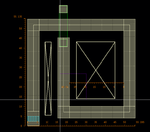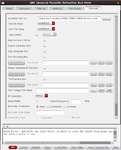ivan848984
Newbie level 4
Hello. I am trying to design a custom inductor in Cadence Virtuoso for mm-wave applications in TSMC 130nm. I drew a spiral inductor (as seen in the attachment) in metal 8 and metal 7. I've run Quantus QRC and done RLCk extraction. Y parameter measurement yielded L = 137pH (which matches with theory - Bryan's formula), but Q is pretty high, around 180. I've also modeled inductor in HFSS and got Q = 16.5. I'm guessing I haven't included Substrate extraction in QRC, but I cannot find the techfile for that.
Also, what additional layers should I add in this inductor layout?
Any additional advice about this problem would be extremely helpful.
Thanks.


Referring to previous thread https://www.edaboard.com/threads/278522/
Also, what additional layers should I add in this inductor layout?
Any additional advice about this problem would be extremely helpful.
Thanks.


Referring to previous thread https://www.edaboard.com/threads/278522/
Last edited by a moderator: